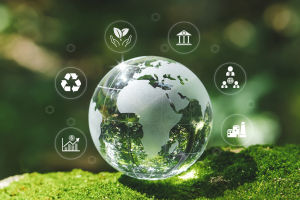While the consequences of climate change may not always be immediately visible, its effects are profoundly shaping the world around us.
Warming Temperatures
Rising global temperatures are one of the most widely recognized impacts of climate change. Since 1850, the average surface temperature has increased by about 0.11°F (0.06°C) per decade.
While this may seem modest, the top 10 warmest years in recorded history have all occurred in the last decade, highlighting the urgency of this crisis. Higher temperatures increase the risk of heat-related illnesses such as heat and exhaustion, and they also disrupt farming, leading to crop failures, higher food prices, and food insecurity.
Extreme Weather Events
The climate crisis is intensifying the frequency and severity of extreme weather events like hurricanes, floods, wildfires, and snowstorms. These events disrupt lives, damage infrastructure, and destroy habitats. Warmer oceans fuel stronger hurricanes, while rising temperatures also contribute to heavier snowfall in some regions.
Severe storms lead to flooding, contaminating drinking water supplies and increasing the spread of diseases like malaria and cholera. Rebuilding after such disasters is costly, and many communities, especially those dependent on agriculture or tourism, struggle to recover.
Rising Sea Levels
Melting glaciers and ice caps are causing sea levels to rise, threatening coastal communities with erosion, flooding, and displacement. As coastlines erode, people lose their homes, businesses, and livelihoods, with some areas becoming uninhabitable.
Coastal habitats, like those of sea turtles and the Key deer, are disappearing, leaving wildlife with fewer places to survive. Saltwater intrusion into freshwater sources further complicates water access and agricultural practices.
Poor Air Quality
Climate change exacerbates air pollution, particularly ground-level ozone, which forms when pollutants from vehicles and industries react with sunlight. This can worsen respiratory conditions like asthma and contribute to long-term lung diseases.
Food and Water Scarcity
Changes in weather patterns—especially droughts and extreme temperatures—affect crop production, leading to food shortages and increased prices. Water sources also become scarcer, with droughts depleting reserves necessary for drinking and agriculture.
Biodiversity Loss
Rising temperatures and habitat loss threaten biodiversity, placing many species at risk of extinction. As ecosystems change, animals are forced to migrate or face extinction. This loss of biodiversity not only impacts wildlife but also undermines natural systems that support life on Earth, including our own.
The Way Forward
The impacts of climate change are undeniable, but urgent action is still possible. By adopting nature-based solutions and supporting conservation efforts, we can protect ecosystems, reduce greenhouse gas emissions, and help communities adapt to changing conditions.
As individuals, we can contribute by reducing our carbon footprint, supporting sustainable practices, and advocating for climate action.
Causes and Effects of Climate Change | National Geographic
Video by National Geographic


